Growing Brussels Sprouts in Containers might seem like a challenge reserved for seasoned gardeners with sprawling acres, but I’m here to tell you it’s totally achievable, even if your “garden” is a sunny balcony or a small patio! Forget the image of endless fields; we’re bringing the farm-to-table experience right to your doorstep, one sprout at a time.
For centuries, Brussels sprouts have been a staple in European cuisine, with roots tracing back to, you guessed it, Brussels, Belgium. These mini cabbages were carefully cultivated and enjoyed for their unique flavor and nutritional benefits. Now, you can partake in this delicious history, without needing a sprawling farm.
Why bother with growing Brussels sprouts in containers, you ask? Well, imagine stepping outside and harvesting fresh, flavorful sprouts for your dinner, knowing exactly where they came from and what went into growing them. Plus, container gardening gives you complete control over the soil, sunlight, and watering, leading to healthier, more productive plants. In this article, I’m going to share some simple, yet effective DIY tricks and hacks that will help you successfully grow Brussels sprouts in containers, even if you’re a complete beginner. Get ready to enjoy the satisfaction of homegrown goodness!
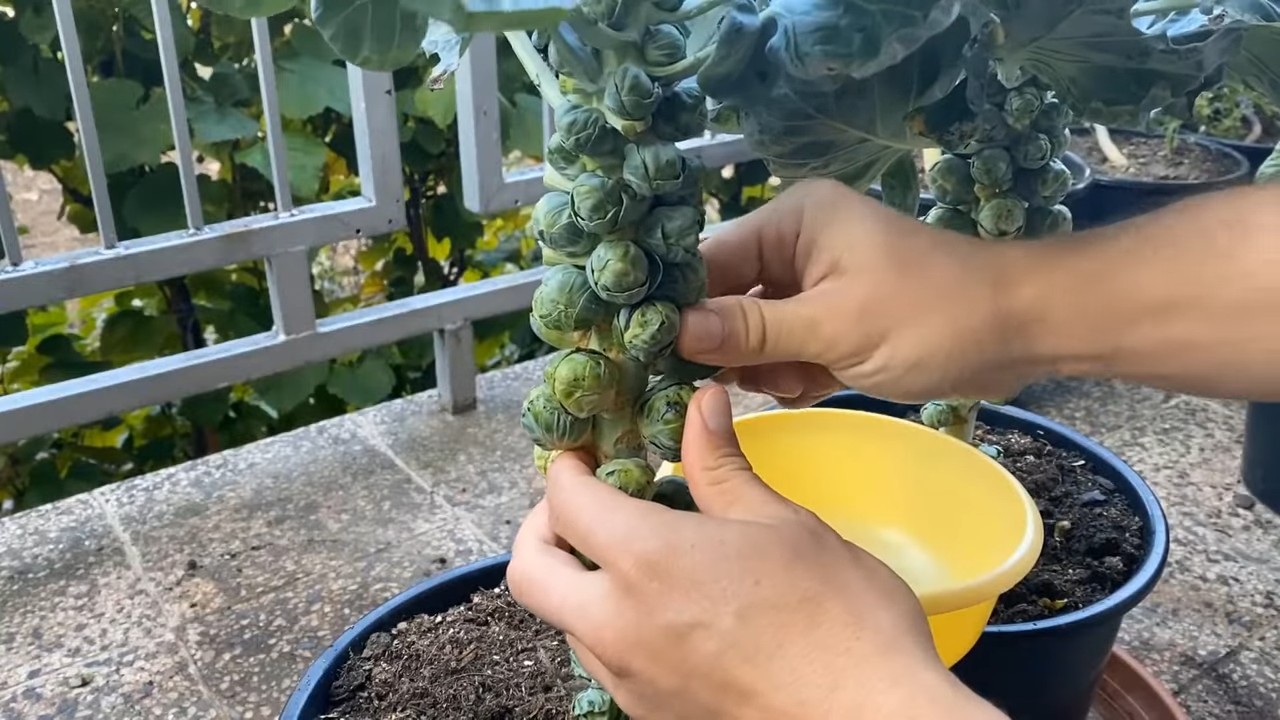
Growing Brussels Sprouts in Containers: A Comprehensive DIY Guide
Hey there, fellow gardening enthusiasts! I’m so excited to share my tried-and-true method for growing delicious Brussels sprouts right in containers. Forget thinking you need acres of land – with a little know-how, you can enjoy these homegrown goodies even with limited space. Let’s dive in!
Choosing the Right Container and Soil
First things first, you need the right foundation for your Brussels sprouts to thrive. This means selecting the perfect container and soil.
* Container Size: Brussels sprouts need room to grow, both above and below ground. I recommend a container that’s at least 12 inches in diameter and 12 inches deep. Bigger is generally better, so if you have the space, go for a 15-gallon container or larger. This will give the roots plenty of space to spread out and support the plant’s growth.
* Material: The material of your container is less critical than the size, but some options are better than others. Plastic containers are lightweight and retain moisture well, but they can get hot in direct sunlight. Terracotta pots are more breathable, which can help prevent root rot, but they dry out faster. Fabric pots are another great option, as they allow for excellent drainage and aeration. I personally prefer using large plastic containers because they are easy to move and maintain moisture levels.
* Drainage: This is non-negotiable! Make sure your container has plenty of drainage holes. Brussels sprouts don’t like sitting in soggy soil, which can lead to root rot and other problems. If your container doesn’t have enough drainage, you can drill some extra holes in the bottom.
* Soil: Brussels sprouts are heavy feeders, meaning they need nutrient-rich soil to grow well. I recommend using a high-quality potting mix that’s specifically formulated for vegetables. Avoid using garden soil, as it can be too heavy and compacted for container gardening. You can also amend your potting mix with compost or other organic matter to boost its nutrient content. I like to add a slow-release fertilizer to the soil at planting time to give my Brussels sprouts a good start.
Planting Your Brussels Sprouts
Now that you have your container and soil ready, it’s time to plant your Brussels sprouts!
* Starting from Seed vs. Transplants: You can start Brussels sprouts from seed or purchase transplants from a nursery. Starting from seed gives you more control over the process and allows you to choose from a wider variety of cultivars. However, it also requires more time and effort. Transplants are more convenient, but you’re limited to the varieties that are available at your local nursery. I usually opt for transplants because they are easier to manage, especially when I’m short on time.
* Timing: Brussels sprouts are a cool-season crop, meaning they grow best in cooler temperatures. If you’re starting from seed, you’ll need to start them indoors about 6-8 weeks before the last expected frost. If you’re using transplants, you can plant them outdoors after the last frost. In warmer climates, you can plant Brussels sprouts in the fall for a winter harvest.
* Planting Depth: When planting transplants, make sure to plant them at the same depth they were growing in their original containers. Gently remove the transplant from its container and loosen the roots slightly before planting.
* Spacing: If you’re planting multiple Brussels sprouts in the same container, make sure to space them at least 18 inches apart. This will give them enough room to grow and prevent overcrowding. I usually plant one Brussels sprout plant per container to ensure it has enough space and nutrients.
Step-by-Step Planting Instructions:
1. Fill the container: Fill your container with the potting mix, leaving a few inches of space at the top.
2. Dig a hole: Dig a hole in the center of the container that’s large enough to accommodate the root ball of your transplant.
3. Plant the transplant: Gently remove the transplant from its container and loosen the roots slightly. Place the transplant in the hole and backfill with potting mix.
4. Water thoroughly: Water the transplant thoroughly after planting. This will help settle the soil and encourage root growth.
5. Add mulch: Add a layer of mulch around the base of the plant to help retain moisture and suppress weeds. I like to use straw or shredded leaves as mulch.
Caring for Your Brussels Sprouts
Once your Brussels sprouts are planted, it’s important to provide them with the care they need to thrive.
* Watering: Brussels sprouts need consistent moisture to grow well. Water them deeply whenever the top inch of soil feels dry to the touch. Avoid overwatering, as this can lead to root rot. I usually water my Brussels sprouts every 2-3 days, depending on the weather.
* Fertilizing: As I mentioned earlier, Brussels sprouts are heavy feeders. Fertilize them every 2-3 weeks with a balanced fertilizer. You can also side-dress them with compost or other organic matter. I use a liquid fertilizer diluted to half strength to avoid burning the roots.
* Sunlight: Brussels sprouts need at least 6 hours of sunlight per day to grow well. Place your container in a sunny location where it will receive plenty of direct sunlight. If you live in a hot climate, you may need to provide some afternoon shade to prevent the plants from overheating.
* Pest Control: Brussels sprouts are susceptible to a variety of pests, including aphids, cabbage worms, and flea beetles. Inspect your plants regularly for signs of pests and take action as needed. You can use insecticidal soap or neem oil to control aphids and flea beetles. For cabbage worms, you can handpick them off the plants or use Bacillus thuringiensis (Bt), a natural insecticide. I prefer using organic pest control methods whenever possible to avoid harming beneficial insects.
* Supporting the Plants: As Brussels sprouts grow, they can become quite tall and top-heavy. You may need to provide support to prevent them from falling over. You can use stakes or a tomato cage to support the plants. I usually use bamboo stakes and tie the plants to the stakes with twine.
* Removing Yellowing Leaves: As the plant matures, the lower leaves will naturally turn yellow and die. Remove these leaves to improve air circulation and prevent disease. I regularly prune the yellowing leaves to keep the plant healthy and productive.
Harvesting Your Brussels Sprouts
The moment you’ve been waiting for – harvesting your homegrown Brussels sprouts!
* Timing: Brussels sprouts are typically ready to harvest about 90-100 days after planting. The sprouts should be firm and about 1-2 inches in diameter. The lower sprouts will mature first, so you can harvest them as they become ready.
* Harvesting Technique: To harvest Brussels sprouts, simply twist them off the stem. Start with the lower sprouts and work your way up the plant. You can also remove the leaves below the sprouts to encourage the plant to produce more sprouts.
* Storage: Freshly harvested Brussels sprouts can be stored in the refrigerator for up to a week. I like to store them in a plastic bag or container to keep them from drying out.
Step-by-Step Harvesting Instructions:
1. Check for ripeness: Look for sprouts that are firm and about 1-2 inches in diameter.
2. Twist off the sprouts: Gently twist the sprouts off the stem, starting with the lower sprouts.
3. Remove leaves: Remove the leaves below the harvested sprouts to encourage further production.
4. Store the sprouts: Store the harvested sprouts in the refrigerator in a plastic bag or container.
Troubleshooting Common Problems
Even with the best care, you may encounter some problems when growing Brussels sprouts. Here are some common issues and how to address them:
* Aphids: These tiny pests can suck the sap from your Brussels sprouts, causing them to become weak and stunted. Control aphids with insecticidal soap or neem oil.
* Cabbage Worms: These caterpillars can devour the leaves of your Brussels sprouts, leaving them riddled with holes. Handpick the worms off the plants or use Bacillus thuringiensis (Bt).
* Flea Beetles: These tiny beetles can jump around and create small holes in the leaves of your Brussels sprouts. Control flea beetles with insecticidal soap or neem oil.
* Root Rot: This fungal disease can cause the roots of your Brussels sprouts to rot, leading to wilting and death. Prevent root rot by ensuring good drainage and avoiding overwatering.
* Buttoning: This occurs when the sprouts develop prematurely and remain small and loose. Buttoning can be caused by stress, such as lack of water or nutrients. Ensure your plants are getting enough water and fertilizer to prevent buttoning.
Choosing the Right Variety
Selecting the right variety of Brussels sprouts is crucial for success, especially when growing in containers. Some varieties are more compact and better suited for container gardening than others. Here are a few of my favorites:
* ‘Jade Cross’: This is a classic variety that produces high yields of uniform, dark green sprouts
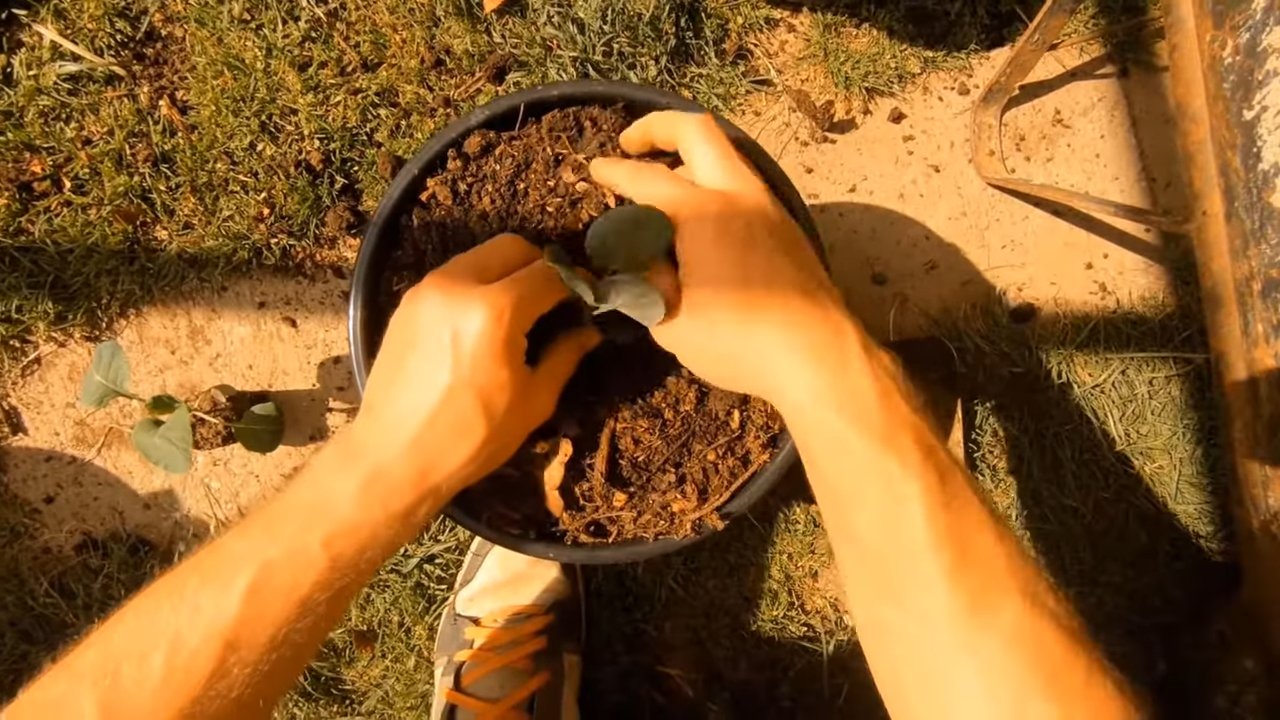
Conclusion
So, there you have it! Growing Brussels sprouts in containers isn’t just a possibility; it’s a rewarding and surprisingly accessible way to enjoy fresh, homegrown vegetables, even if you’re short on space. We’ve walked through the entire process, from selecting the right container and soil to nurturing your plants and harvesting those delicious little sprouts.
Why is this DIY trick a must-try? Because it puts you in control. You dictate the quality of the soil, the amount of sunlight, and the overall care your Brussels sprouts receive. This translates to a superior flavor and texture compared to store-bought options, and the satisfaction of knowing you grew them yourself is simply unmatched. Plus, container gardening allows you to protect your plants from pests and diseases more easily than in-ground gardening. You can move them to sheltered locations during harsh weather or isolate them if you notice any problems.
But the beauty of container gardening lies in its adaptability. Feel free to experiment! Try different varieties of Brussels sprouts. Some are more compact and better suited for containers than others. ‘Redarling’ offers a beautiful reddish-purple hue, while ‘Long Island Improved’ is a classic choice known for its reliable yields.
Consider companion planting to enhance your Brussels sprouts’ growth and deter pests. Marigolds, nasturtiums, and thyme are excellent choices to plant alongside your sprouts in the same container or nearby. They not only add visual appeal but also offer practical benefits.
Don’t be afraid to adjust the watering schedule based on your local climate and the specific needs of your plants. Check the soil moisture regularly and water deeply when the top inch or two feels dry. Remember, consistent moisture is key to preventing the sprouts from becoming bitter.
And speaking of bitterness, a light frost can actually improve the flavor of Brussels sprouts, making them sweeter and more palatable. If you live in an area with mild winters, consider leaving your plants outdoors for a few weeks after the first frost to enhance their taste.
Ultimately, the best way to learn is by doing. So, gather your supplies, choose your favorite Brussels sprouts variety, and get started! We’re confident that you’ll be amazed at the results.
We encourage you to embrace this method of growing Brussels sprouts in containers. It’s a fantastic way to connect with nature, enjoy fresh, healthy food, and add a touch of green to your living space.
Once you’ve harvested your first batch of homegrown Brussels sprouts, we’d love to hear about your experience! Share your tips, tricks, and photos in the comments below. Let’s create a community of container gardening enthusiasts and inspire others to give it a try. Happy gardening!
Frequently Asked Questions (FAQ)
What is the best size container for growing Brussels sprouts?
Brussels sprouts need a good amount of space to develop properly. A container that is at least 12 inches in diameter and 12 inches deep is generally recommended for a single plant. However, a larger container, such as a 15-20 gallon pot, is even better, especially if you plan to grow multiple plants in the same container. The larger the container, the more room the roots have to grow, and the more stable the plant will be. Ensure the container has adequate drainage holes to prevent waterlogging.
What type of soil is best for container-grown Brussels sprouts?
Brussels sprouts thrive in well-draining, nutrient-rich soil. A good potting mix specifically formulated for vegetables is ideal. You can also create your own mix by combining equal parts of compost, peat moss (or coconut coir), and perlite or vermiculite. Compost provides essential nutrients, peat moss (or coconut coir) helps retain moisture, and perlite or vermiculite improves drainage and aeration. Avoid using garden soil in containers, as it can become compacted and doesn’t drain well.
How much sunlight do Brussels sprouts need when grown in containers?
Brussels sprouts require at least 6-8 hours of direct sunlight per day to produce a good yield. Choose a location for your container that receives plenty of sunlight throughout the day. If you live in a particularly hot climate, some afternoon shade may be beneficial to prevent the plants from overheating. If you don’t have a sunny spot, you can supplement with grow lights.
How often should I water my container-grown Brussels sprouts?
Watering frequency depends on several factors, including the size of the container, the type of soil, the weather, and the growth stage of the plant. Generally, you should water deeply whenever the top inch or two of soil feels dry to the touch. Avoid overwatering, as this can lead to root rot. During hot, dry weather, you may need to water daily. Check the soil moisture regularly and adjust your watering schedule accordingly.
Do I need to fertilize my Brussels sprouts in containers?
Yes, Brussels sprouts are heavy feeders and benefit from regular fertilization. Use a balanced fertilizer specifically formulated for vegetables, following the instructions on the package. You can also supplement with organic fertilizers such as compost tea or fish emulsion. Fertilize every 2-3 weeks during the growing season to ensure your plants receive the nutrients they need.
How do I deal with pests and diseases on my container-grown Brussels sprouts?
Container gardening can help reduce the risk of pests and diseases, but it’s still important to be vigilant. Common pests that affect Brussels sprouts include aphids, cabbage worms, and flea beetles. Inspect your plants regularly for signs of infestation and take action promptly. You can use insecticidal soap, neem oil, or handpick pests off the plants. To prevent diseases, ensure good air circulation around the plants, avoid overwatering, and remove any infected leaves promptly. Crop rotation is not applicable in container gardening, but cleaning and sterilizing the container between plantings is recommended.
When are Brussels sprouts ready to harvest?
Brussels sprouts are typically ready to harvest about 90-100 days after planting. The sprouts should be firm, green, and about 1-2 inches in diameter. Start harvesting from the bottom of the plant upwards, as the lower sprouts mature first. Twist or cut the sprouts off the stem, leaving the upper sprouts to continue developing. You can harvest over several weeks as the sprouts mature.
Can I grow Brussels sprouts in containers indoors?
While it’s possible to grow Brussels sprouts indoors, it can be challenging due to the high light requirements. You’ll need to provide at least 6-8 hours of strong artificial light per day using grow lights. Additionally, you’ll need to ensure good air circulation and maintain a consistent temperature. Growing Brussels sprouts outdoors in containers is generally easier and more successful.
What are some common problems when growing Brussels sprouts in containers?
Some common problems include:
* **Bitter sprouts:** This can be caused by inconsistent watering, lack of nutrients, or hot weather.
* **Small sprouts:** This can be due to insufficient sunlight, lack of nutrients, or overcrowding.
* **Pest infestations:** Aphids, cabbage worms, and flea beetles can damage the plants.
* **Root rot:** This can be caused by overwatering or poor drainage.
By addressing these issues promptly, you can ensure a successful harvest.
Can I reuse the soil from my container after harvesting Brussels sprouts?
It’s generally not recommended to reuse the same soil for growing Brussels sprouts or other brassicas (like cabbage, broccoli, or kale) in the same container year after year. This can increase the risk of soilborne diseases and nutrient depletion. If you want to reuse the soil, amend it with fresh compost and organic matter to replenish nutrients and improve drainage. Alternatively, you can use the old soil for other types of plants that are not susceptible to the same diseases. Sterilizing the soil by baking it in the oven or using a soil solarization method can also help reduce the risk of disease. However, starting with fresh potting mix is always the safest option.

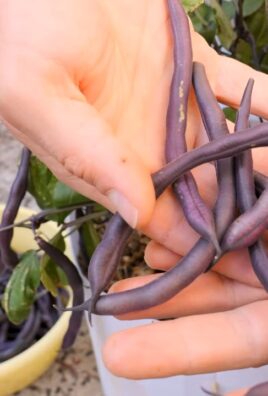
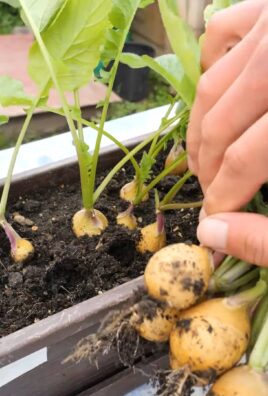
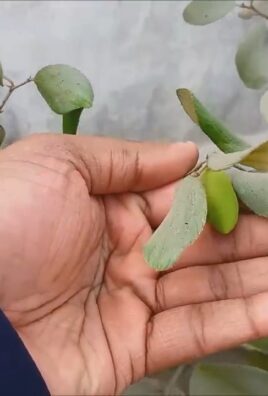
Leave a Comment